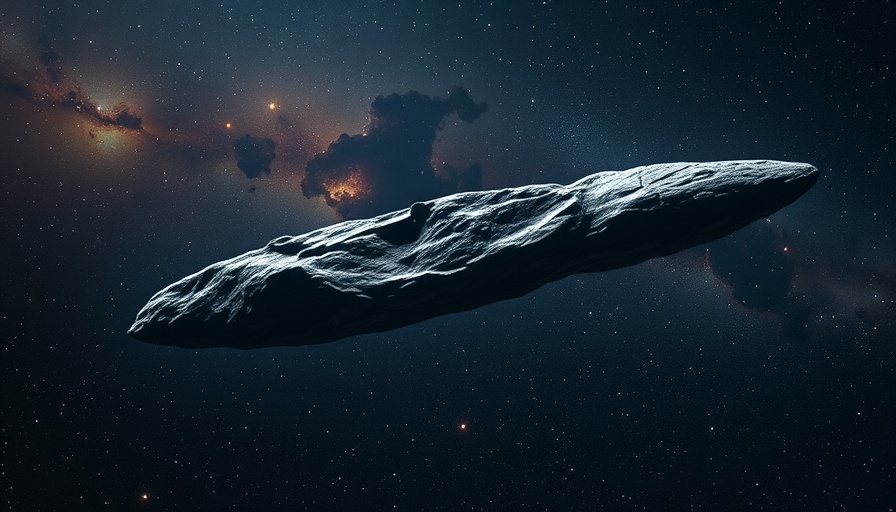
The Journey of Interstellar Objects: What Lies Ahead?
As humanity ventures deeper into the cosmos, we are beginning to recognize the significance of interstellar objects. Notable among these celestial travelers are 1I/'Oumuamua, 2I/Borisov, and 3I/Atlas. Each of these bodies has a unique origin and trajectory that not only piques scientific curiosity but also enhances our understanding of the universe beyond our solar system. This article explores where these fascinating objects are headed now and what their journeys can teach us about our place in the cosmos.
'Oumuamua: The Mysterious First Encounter
Discovered in 2017, 1I/'Oumuamua was the first interstellar object detected passing through our solar system. Its elongated shape and unexpected acceleration raise many questions among scientists. Currently, 'Oumuamua is heading away from the Sun, making its journey through the Milky Way. Researchers speculate about its composition and origins—from a possible cometary body to a fragment of a distant planet—but its exact nature remains a mystery. Understanding the path and velocity of 'Oumuamua can unlock insights into the formation of planetary systems, offering clues about worlds that might exist around distant stars.
2I/Borisov: The Comet from Afar
Following 'Oumuamua, 2I/Borisov was detected in 2019 and is the second known interstellar visitor. Unlike 'Oumuamua, Borisov displays a more typical comet-like appearance, complete with a tail. Borisov is on a hyperbolic trajectory, and as it speeds away from the Sun, it leaves behind a fascinating trail of dust and gas. Comparing Borisov’s characteristics with those of comets from our solar system can provide valuable data on the chemical diversity of other star systems and the possible presence of organic materials across the universe.
3I/Atlas: The New Kid on the Block
Discovered in 2020, 3I/Atlas is another intriguing addition to our catalog of interstellar objects. Its trajectory suggests it will make a close pass by our Sun before continuing its journey into the interstellar medium. Scientists are keeping a close eye on Atlas, as it may offer an opportunity to analyze pattern changes in its brightness and composition while in proximity to our solar system. The insights gleaned from Atlas could aid scientists in better understanding how these cosmic travelers interact with solar systems.
The Importance of Tracking Interstellar Objects
The study of interstellar visitors like 'Oumuamua, Borisov, and Atlas highlights key aspects of planetary formation and evolution across different star systems. As we learn more about these objects, we gain a greater understanding of the multitudes of environments that exist in our galaxy. Tracking their movements not only provides an opportunity for research but also enhances our technological capabilities, potentially leading to future advancements in space exploration and planetary science.
Exploring the Unknown: Future Implications
A deeper understanding of interstellar objects can have significant implications for humanity’s future in space. If we can determine the materials that make up these bodies, it opens the door to possibilities of astrobiology and the search for extraterrestrial life. As technology advances in space observation, we may discover an abundance of other interstellar objects, enriching our cosmic library and potentially changing our understanding of life and existence beyond Earth.
As space research progresses, enthusiastically following the journeys of 'Oumuamua, Borisov, and Atlas is crucial. These interstellar objects are not just isolated anomalies; they are signposts pointing to a broader cosmic narrative that invites us to explore, learn, and push our boundaries into the unknown.
 Add Row
Add Row  Add
Add 




Write A Comment